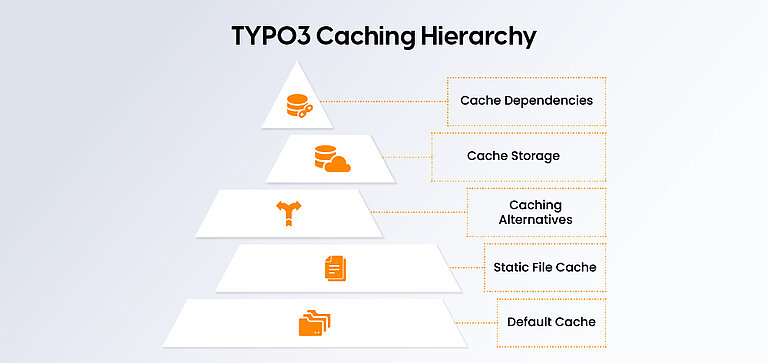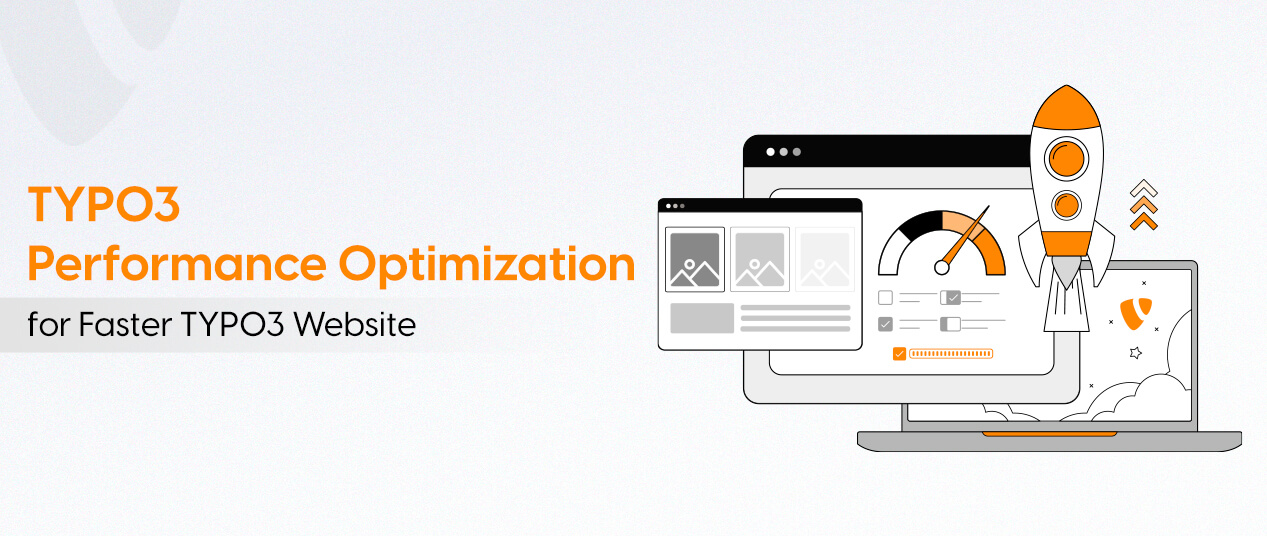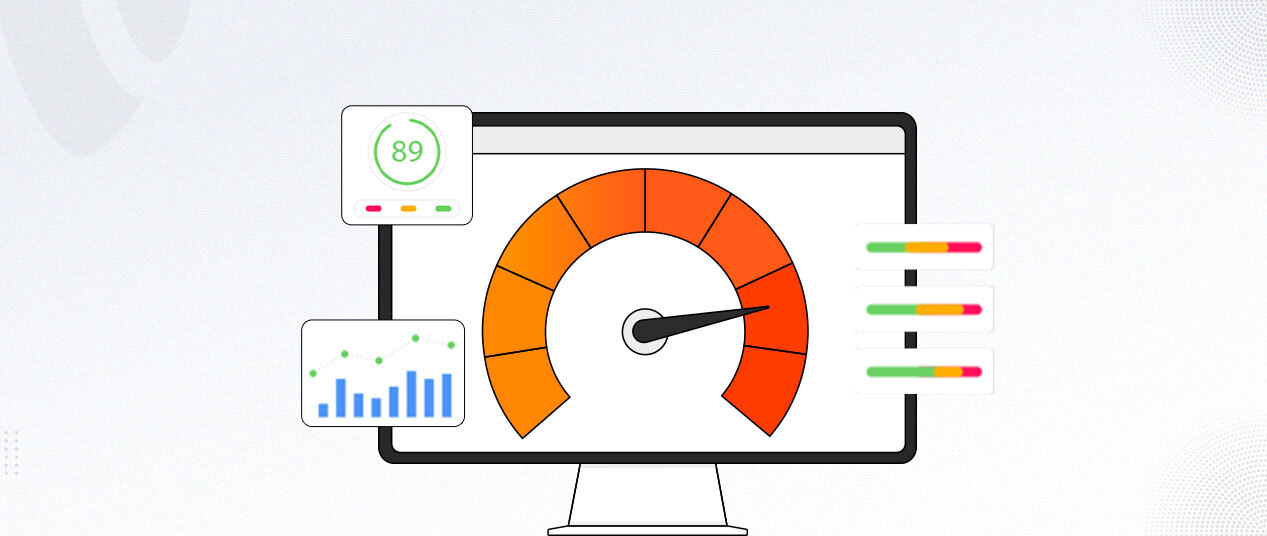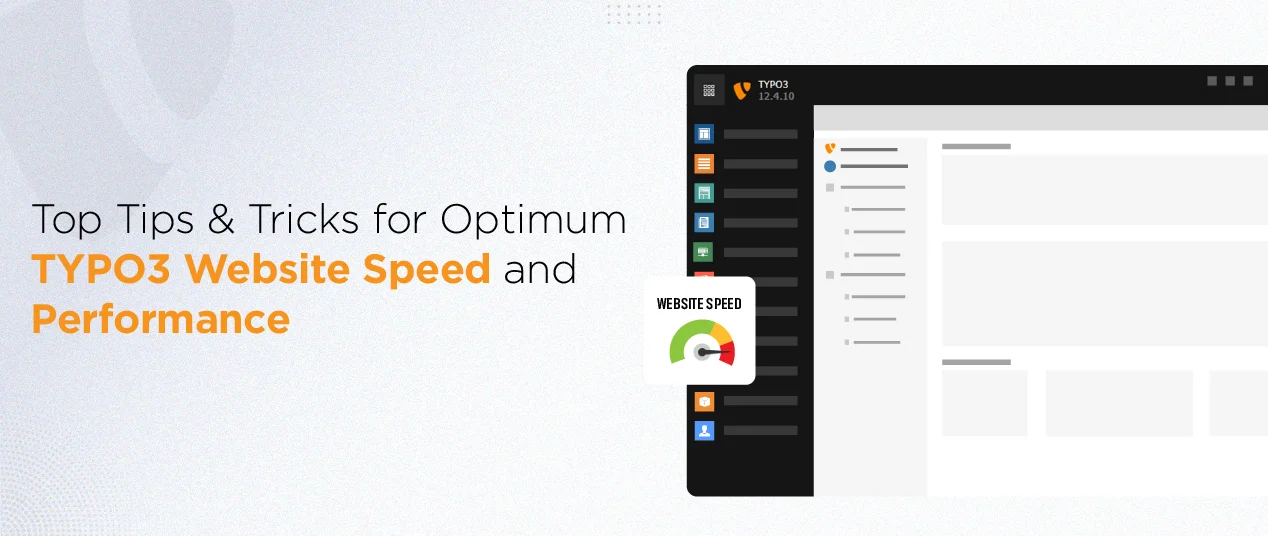Desktop average load time is about 2.5 seconds, but mobile is slower, often taking more than 8 seconds to load (source). That is a big difference. Studies estimate that about 53% of visitors will abandon a site if it takes more than 3 seconds to load (source).
Google also shows this: slower loading pages have higher abandonment rates. The longer the load time increases (like 3 seconds instead of 1 second), the more visitors will leave (source).
These statistics highlight a simple fact: speed is important. TYPO3 is a powerful platform that can be improved in speed and overall TYPO3 performance.
Here, we'll explore practical steps to optimize your TYPO3 site so that it will load faster, and it will ultimately improve your visitors' experience.
Measure Your Starting Point with TYPO3 Speed Test
It is crucial to know how your TYPO3 website is currently performing before you start optimizing. Think of it like a long journey where you check the tank and engine of your car. You can only improve what you can measure.
There are several free tools you can use to gather information. The most well-known include:
- Google PageSpeed Insights: Provides your score for both desktop and mobile devices, with suggestions on what to improve.
- GTmetrix: Shows loading times, requests, and which elements affect loading time.
- WebPageTest: Allows you to view your page from different locations and browser types and provides a complete TYPO3 performance report.
Pay attention to important metrics such as:
- Largest Contentful Paint (LCP) – how long it takes for the main content to be displayed. Anything under 2.5 seconds is ideal.
- Total Blocking Time (TBT) – how much delay is caused by JavaScript. Lower values are better.
- Cumulative Layout Shift (CLS) – how much does the page shift during loading? Less than 0.1 is optimal.
- First Input Delay (FID) – how quickly does the page respond to the user?
Check the values on both desktop and mobile devices, as desktop pages tend to load faster, but the majority of traffic comes from mobile devices.
Choose Better TYPO3 Hosting
Hosting your website plays an essential role in loading speed. Even if a website is optimized in TYPO3, a poor server can slow it down. Shared hosting is the cheapest option, but you share CPU and RAM resources with hundreds of other websites. This can lead to slow loading times, especially with high traffic.
For the best performance of your website, you should consider the following TYPO3 hosting options:
- TYPO3 optimized hosting: This type of hosting is specifically tailored to TYPO3. Cache and PHP settings are already optimized.
- VPS (Virtual Private Server) or Dedicated Hosting: In this environment, you have full control. Your website runs consistently well because you do not share server resources with others.
- Cloud hosting: Providers like AWS, Google Cloud, or Digital Ocean automatically scale resources when traffic increases. This is advantageous because your resources grow with the traffic.
Check the location of your server. If your website mainly has visitors in a specific region (e.g., North America, Europe), a server in the same region reduces loading time because the data does not have to travel as far.
A solid host is one of the simplest and most effective ways to see immediate improvements in TYPO3 performance without any code changes.
Optimize Images, Size & Format Matter for TYPO3 Performance
Images typically take up the most storage space on a page, and non-optimized images can lead to long loading times for your users in a TYPO3 installation. Optimizing images makes a big difference as it makes your images lighter and faster without losing important image quality.
- Resize appropriately: The image should be displayed at the size it has on the page.
- Use modern formats: WebP and AVIF formats achieve better compression than JPEG or PNG without quality loss.
- Lazy loading: Images should only load to the user's display when they actually appear on the screen, which is important because that will speed up the first load. Lazy loading of images is easy within the TYPO3 system using <img loading="lazy">.
- Compress images: Numerous image compression tools help reduce file size without visible quality loss (minimal loss).
The goal of image optimization is to reduce page size while improving performance on different devices. If the images are properly optimized, pages can achieve over 85 on Google PageSpeed Insights and Largest Contentful Paint (LCP) under 2.5 seconds, which allows users quick access to content and ultimately also supports TYPO3 SEO.
Rely on TYPO3 Caching

Caching is the most important method to speed up TYPO3 because it reduces the time the server needs at runtime for page generation. TYPO3 supports caching by default, and when used effectively, it can significantly improve TYPO3 performance.
- Default cache: The default cache should be enabled in TypoScript (config.no_cache = 0) to prevent pages from being regenerated for every visitor.
- Static file caching: Extensions like nc_staticfilecache deliver pre-rendered HTML, providing significant speed advantages.
- Caching alternatives: Varnish or Redis can be configured on a TYPO3 server for very high-traffic websites. They can store pages and/or data in memory to achieve very low latency.
- Caching storage: Since TYPO3 10.1+, the installation can cache either to the file system (faster) or the database, depending on the focus and architecture of your website.
- Cache dependencies: TYPO3 always ensures that content is updated and immediately visible without negatively affecting the cached pages.
How to clear TYPO3 cache:
- In the TYPO3 Backend, click on the Flush Cache button (top toolbar).
- Select Flush frontend caches to update page content.
- For a deeper cleanup, select Flush all caches, which clears system, page, and extension caches.
- If using the CLI, execute:
./typo3cms cache:flush - This will quickly clear all caches via the command line.
Proper caching has the potential to significantly reduce server load (though not completely eliminate it). Indirectly, you benefit because pages load faster. For example, full caching can reduce the Time to First Byte (TTFB) to under 0.3 seconds; this is a very strong ranking signal for search engines and also one of the best user experiences.
Compress & Combine CSS & JS
One of the easiest ways to improve your TYPO3 website speed is to optimize your CSS and JavaScript files. When you have lots of CSS or JS files, the browser has to load each file individually, which really hurts your load time. By compressing and combining CSS and JavaScript files, you have reduced file size and the number of files to be loaded, meaning pages load faster.
This is simple with TYPO3 through TypoScript. You can include groups of CSS or JS files and include them either separately or together:
# Combine and compress CSS
page.includeCSS {
file1 = fileadmin/css/style1.css
file2 = fileadmin/css/style2.css
}
config.compressCss = 1
config.concatenateCss = 1
# Combine and compress JS
page.includeJSFooter {
file1 = fileadmin/js/script1.js
file2 = fileadmin/js/script2.js
}
config.compressJs = 1
config.concatenateJs = 1
With the above configuration:
- The browser now has fewer files to load (merged CSS and JS into fewer files) and thus, the page loads faster.
- Compressing the files will also reduce their size.
- By including your JS (includeJSFooter) in the footer, you do not block the page from rendering, meaning your users see the content faster and thus reducing the load time.
No one likes a slow website. Too many CSS or JavaScript files can slow the TYPO3 website down. If you compress and combine files, your pages will load faster. Here’s how to do it:
- Minify files - Strip spaces, comments, and line breaks to reduce the size of the file.
- Combine files - The fewer files you have, the less requests made via HTTP, and the faster load times.
- Load JS in the footer - You provide the user with content quickly while scripts load in the background.
- Use the TYPO3 tools - Using TypoScript or looking for extensions such as ext:assets that will automatically combine and compress files.
This small change can produce a significant improvement in page speed and user experience, with simple, no-frills setups and no extra plugins.
Activate Gzip or Brotli Compression for TYPO3 Assets
By setting up Gzip or Brotli compression on your server, these files are compressed for faster download in the browser.
Most modern servers, including Apache or Nginx, have Gzip and Brotli support. Brotli typically takes the lead in compression, but Gzip is more consistent as far as compatibility goes. In this brief example, I'll run through how to enable Gzip on Apache:
# Enable Gzip compression
<IfModule mod_deflate.c>
AddOutputFilterByType DEFLATE text/html text/plain text/xml text/css application/javascript application/json
</IfModule>
For Nginx, it looks like this:
# Enable Gzip compression
gzip on;
gzip_types text/plain text/css application/json application/javascript text/xml application/xml application/xml+rss text/javascript;
And just like that, you can expect to see faster page load speeds because the files are downloaded at a smaller size. If you want to see whether compression takes effect, use GTmetrix or WebPageTest.
In combination with CSS/JS optimization, caching, and image compression, your TYPO3 site will begin to feel a lot faster for users across all devices.
Use a Content Delivery Network (CDN)
A Content Delivery Network, or CDN, is a collection of servers in various geographical locations around the world. A CDN will help your TYPO3 site load quickly because it delivers content from the server that is closest to the visitor.
Here is how a CDN can help:
- Decreases the loading time for visitors who are far away from your host server.
- Caches static resources, including images, CSS, JavaScript, and occasionally even pre-rendered pages.
- Spreads the traffic spikes by having multiple servers share requests.
- Improves user experience globally and improves overall TYPO3 website performance.
How to use a CDN with TYPO3:
- Select a CDN provider (Cloudflare, KeyCDN, or AWS CloudFront are popular ones).
- Change the DNS settings to route traffic through the chosen CDN provider.
- Configure TYPO3 to reference the CDN URL for static files.
Check if it’s working:
- Use tools such as GTmetrix, WebPageTest, or Google PageSpeed Insights.
- Check the speed at which your page loads, before and after you activate the CDN.
- Many users report faster load times, especially for users further away from your site.
Clean Up TYPO3 Database & Slow Queries

Regular maintenance is important because a bloated database can affect the speed of your TYPO3 website. Deleting old content revisions, old logs, and unused extensions frees up space and makes your website significantly faster:
1. Remove Unused Data
A neglected database slows down your TYPO3 instance. As a best practice, you should delete old content, old content revisions, old logs, and extensions that are no longer used to avoid being distracted by outdated content.
You can use the TYPO3 command line tool to safely clean up your database and keep your TYPO3 instance optimized:
./vendor/bin/typo3 cms:database:cleanup
2. Optimize Database Tables
Optimizing tables in MySQL can improve query performance. For example:
OPTIMIZE TABLE typo3_pages;
OPTIMIZE TABLE typo3_tt_content;
This helps TYPO3 retrieve content faster.
3. Clean Up Old Logs
Logs can accumulate over time and slow down your website. Remove logs older than 30 days with:
./vendor/bin/typo3 logging:cleanup --days=30
4. Fix Slow Queries
Queries using % wildcards can be slow, especially with large databases:
SELECT * FROM typo3_pages WHERE title LIKE '%home%';
Instead, use exact matches or full-text search for better TYPO3 performance:
SELECT * FROM typo3_pages WHERE title = 'Home Page';
By implementing the above measures, your TYPO3 database will be clean, your queries will run smoothly, and your website will deliver content effortlessly to the rest of the world.
Configure OPcache for PHP in TYPO3
OPcache is a feature of PHP that caches the precompiled script bytecode in shared memory. PHP no longer has to compile the scripts every time a page is loaded in TYPO3, meaning your site will respond faster in TYPO3.
Enable OPcache in PHP
To use OPcache, open your php.ini file and make sure these lines are added or updated:
opcache.enable=1
opcache.revalidate_freq=30
opcache.revalidate_path=0
- opcache.enable=1 → Turns OPcache on
- opcache.revalidate_freq=30 → Checks for script changes every 30 seconds
- opcache.revalidate_path=0 → Uses the default path for caching
After changes, restart your web server (Apache or Nginx) for them to take effect.
Verify OPcache Status
You can check if OPcache is running using a simple PHP script:
<?php
phpinfo();
?>
Look for the “Zend OPcache” section; it should show “enabled”.
Benefits for TYPO3
- Faster page load because scripts will be precompiled
- Less CPU consumption on the server
- Even better experience on high-traffic sites
While switching on OPcache is a simple step, you'll see a significant improvement in TYPO3 performance.
Measure TYPO3 Again: Test, Monitor & Repeat
Improving TYPO3 performance should not be seen as a single task; once you identify slow areas, you need to make changes such as compressing files, optimizing images, fixing slow queries, adjusting caching, and then you can retest. Repeating this process ensures your TYPO3 site (and traffic) remains fast, smooth, and reliable for everyone.
Conclusion
Improving TYPO3 performance is about identifying opportunities and then making some small, smart changes across your website, images, caching layer, files, server setup, and routine TYPO3 performance testing and monitoring. If you're successful, you will have a quicker, smoother website with happy visitors, and their return improves. And more importantly, our site will have an improved ranking on search engines.
There is a lot to do when it comes to optimizing TYPO3, so if that seems too overwhelming or you'd like some expert help, engaging a TYPO3 agency can save you time and get your site running at an optimal level. With an experienced team, they can audit your setup, implement advanced caching, and provide continued support, so your website can reliably perform at a speed, making visitors happy.
Taking these steps now will mean your visitors will have a better experience, search engine optimization will improve, and your site will be ready when more traffic comes its way.





Be the First to Comment